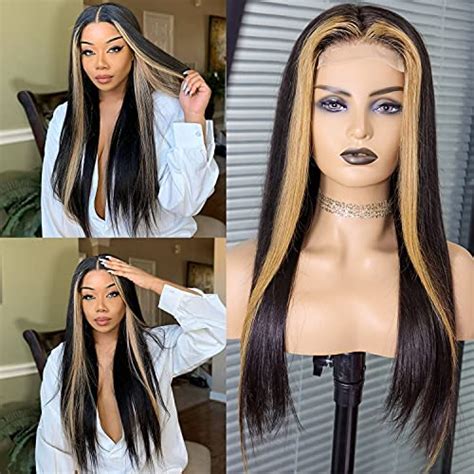Low density wigs offer a seamless blend of coverage and breathability, creating a natural-looking and comfortable hair solution for many. If you’re considering a low density wig, this comprehensive guide provides everything you need to know, from the benefits to styling tips and maintenance techniques.

What are Low Density Wigs?
Low density wigs have a lower hair density than standard wigs. This means that the fibers are spaced further apart, resulting in a lighter, more natural-looking appearance. The lower density allows for air circulation and heat dissipation, providing a comfortable fit and reducing the risk of scalp irritation.
Benefits of Low Density Wigs
- Natural Appearance: Low density wigs mimic the natural hair density of human hair, creating a realistic and inconspicuous look.
- Breathability: The reduced hair density allows for air to penetrate the wig, keeping your scalp cool and comfortable.
- Lightweight and Comfortable: Low density wigs are significantly lighter than standard wigs, providing a comfortable fit for extended wear.
- Versatile Styling: The lower density makes low density wigs easier to style, allowing for various hairstyles and hair volumes.
- Reduced Cost: Due to the lower amount of hair fibers used, low density wigs are generally more affordable than standard wigs.
Choosing the Right Low Density Wig
Selecting the perfect low density wig involves considering your hair type, desired style, and scalp sensitivity.
- Hair Type: If you have thin or fine hair, a low density wig with a similar density will blend seamlessly.
- Desired Style: Low density wigs are suitable for various styles, including short bobs, long layers, and volume-enhancing wigs. Choose a style that complements your face shape and personal preferences.
- Scalp Sensitivity: If you have sensitive skin or scalp conditions, opt for low density wigs made from hypoallergenic materials like bamboo or silk.
Styles and Trends
Low density wigs offer a wide range of styles to suit every taste and need. Some popular options include:
- Short Bobs: Low density bob wigs provide a chic and modern look with minimal maintenance.
- Long Layers: Long, layered low density wigs add volume and movement to hair, creating a natural, flowing effect.
- Volume-Enhancing: Low density wigs designed to boost volume are ideal for those with thin or fine hair.
- Pixie Cuts: Low density pixie wigs offer a bold and edgy style with minimal hair density.
Styling and Maintenance
Low density wigs require specific care to maintain their natural appearance and longevity.
Styling Tips
- Use a Wide-Toothed Comb: Avoid using brushes on low density wigs, as they can damage the fibers.
- Brush Gently: Comb your wig in the direction of hair growth to prevent tangling.
- Use Heat Styling Tools Sparingly: While low density wigs can withstand some heat styling, excessive use can damage the fibers.
- Consider Hairspray: Light hairspray can help hold your style in place without weighing down the wig.
Maintenance Techniques
- Wash Regularly: Low density wigs should be washed every 6-8 wears to remove dirt and product buildup.
- Use a Gentle Shampoo: Opt for sulfate-free shampoos specifically designed for wigs.
- Air Dry: Always air dry your wig to prevent heat damage.
- Store Correctly: Store your wig on a wig stand or in a breathable bag to maintain its shape.
Common Mistakes to Avoid
- Over-Styling: Excessive styling can damage low density wigs, leading to breakage and tangling.
- Using Harsh Chemicals: Avoid using harsh chemicals or bleach on low density wigs, as they can discolor or weaken the fibers.
- Sleeping in Your Wig: Wearing your wig to bed can cause friction and damage.
- Improper Storage: Store your wig in a cool, dry place away from sunlight to prevent fading and fiber damage.
Step-by-Step Approach to Choosing and Styling a Low Density Wig
- Determine Your Hair Type and Desired Style: Consider your natural hair density and the style you’re trying to achieve.
- Research and Order Your Wig: Explore different low density wigs online or at hair salons to find the perfect one.
- Wash and Condition Your Wig: Remove any styling products or residue from the wig before wearing it.
- Brush Your Wig: Gently comb the wig using a wide-toothed comb to remove tangles and create a natural flow.
- Style Your Wig: Use hairspray or other styling products sparingly to hold your style in place.
- Enjoy Your New Look: Feel confident and beautiful in your natural-looking low density wig.
Tables: Key Statistics and Data
Table 1: Low Density Wig Market Size
| Year | Market Size (USD Billion) |
|---|---|
| 2022 | 3.5 |
| 2027 | 8.2 |
| Source: Allied Market Research |
Table 2: Benefits of Low Density Wigs
| Benefit | Description |
|---|---|
| Natural Appearance | Mimics human hair density for a seamless blend |
| Breathability | Allows air circulation for scalp comfort |
| Lightweight and Comfortable | Provides a pleasant fit for extended wear |
| Versatile Styling | Facilitates various hairstyles and volumes |
| Reduced Cost | Typically more affordable than standard wigs |
Table 3: Styling Tips for Low Density Wigs
| Tip | Purpose |
|---|---|
| Wide-Toothed Comb | Prevents damage and detangles |
| Brush Gently | Maintains fiber integrity |
| Heat Styling Sparingly | Avoid excessive heat to prevent damage |
| Light Hairspray | Holds style without weighing down |
Table 4: Common Mistakes to Avoid with Low Density Wigs
| Mistake | Consequence |
|---|---|
| Over-Styling | Breakage and tangling |
| Harsh Chemicals | Discoloration and fiber weakening |
| Sleeping in Your Wig | Friction and damage |
| Improper Storage | Fading and fiber damage |
